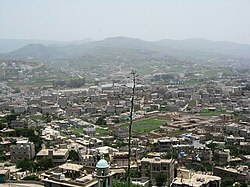
The Arabian Peninsula, or Arabia, is a peninsula in West Asia, situated northeast of Africa on the Arabian Plate. At 3,237,500 km2 (1,250,000 sq mi), comparable in size to India, the Arabian Peninsula is the largest peninsula in the world.
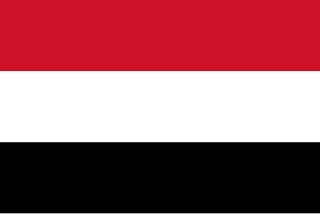
Yemen, officially the Republic of Yemen, is a country in West Asia. Located in southern Arabia, it borders Saudi Arabia to the north, Oman to the northeast, the Red Sea to the west, and the Indian Ocean to the south, sharing maritime borders with Eritrea, Djibouti and Somalia across the Horn of Africa. Covering roughly 455,000 square kilometres, with a coastline of approximately 2,000 kilometres, Yemen is the second largest country on the Arabian Peninsula. Sanaa is its constitutional capital and largest city. Yemen's estimated population is 34.7 million, mostly Arab Muslims. It is a member of the Arab League, the United Nations, the Non-Aligned Movement and the Organisation of Islamic Cooperation.

Seiyun is a city in the region and Governorate of Hadhramaut in Yemen. It is located in the middle of the Hadhramaut Valley, about 360 km from Mukalla, the capital of Mukalla District and the largest city in the area, via western route. It is 12 km from Shibam and 35 km from Tarim, the other large cities in the valley.

Jazan Province, also spelled Jizan is the second smallest province of Saudi Arabia. It stretches 300 km (190 mi) along the southern Red Sea coast, just north of Yemen. It covers an area of 13,457 km2 and had a population of 1,404,997 at the 2022 census. The region has the highest population density in the Kingdom. The capital is the city of Jazan; Prince Muhammad bin Nasser has been the Governor since April 2001.

Abdul Rahman Yahya al-Eryani was a Yemeni politician who served as the second President of the Yemen Arab Republic from 5 November 1967 to 13 June 1974. Originally a leader of the Free Yemeni Movement opposition group during the time of the Mutawakkilite Kingdom of Yemen, al-Eryani served as Minister of Religious Endowments under North Yemen's first republican government and later became the only civilian politician to have led Northern Yemen. He was eventually overthrown by Ibrahim al-Hamdi and died in exile.

Zabid is a town with an urban population of around 52,590 people, located on Yemen's western coastal plain. It is one of the oldest towns in Yemen, and has been a UNESCO World Heritage Site since 1993. However, in 2000, the site was placed on the List of World Heritage in Danger. The town was the capital of several ruling dynasties in Yemen over many centuries.

Al Hudaydah, also transliterated as Hodeda, Hodeida, Hudaida or Hodeidah, is the fourth-largest city in Yemen and its principal port on the Red Sea and it is the centre of Al Hudaydah Governorate. As of 2023, it has an estimated population of 735,000.
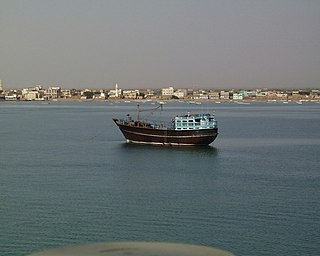
Mokha, also spelled Mocha, or Mukha, is a port city on the Red Sea coast of Yemen. Until Aden and al Hudaydah eclipsed it in the 19th century, Mokha was the principal port for Yemen's capital, Sanaa. Long known for its coffee trade, the city gave its name to Mocha coffee.

Al-Hofuf is the major urban city in the Al-Ahsa Oasis in the Eastern Province of Saudi Arabia, with a population of 729,606. It is known for being one of the largest date producing areas in the world, and for its old markets and palaces.

Dhamar, also spelt Thamar, is a governorate of Yemen located in the central highlands.
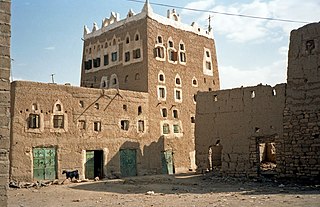
Saada, situated in the northwest of Yemen, is the capital and largest city of the governorate of the same name, and the seat of the eponymous district. The city is located in the mountains of Serat (Sarawat) at an altitude of about 1,800 meters. In 2004, it was the tenth-largest city in Yemen and had an estimated population of 51,870.

Al Baha is a city in south western Saudi Arabia located in the Sarawat Mountains. It is the capital of Al Bahah Region, and is one of the Kingdom's prime tourist attractions. It enjoys a pleasant climate and is surrounded by more than forty forests, including Raghdan, Al-Zaraeb and Baidan. Al Baha is the headquarters of the Governor, local councils and branches of governmental departments. Receiving the state's special attention, the city of Al Baha abounds in educational, tourist and health institutions. It is considered the capital of the Ghamdi and Zahrani tribes in Saudi Arabia, and most of its inhabitants are from the native tribes.
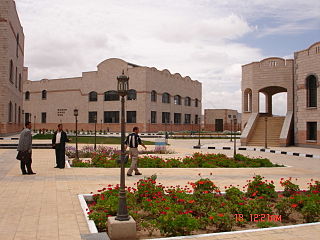
Dhamar is a city in south-western Yemen. It is located at 14°33′0″N44°24′6″E, at an elevation of around 2,400 m (7,900 ft).

Salamiyah is a city in central Syria, administratively part of the Hama Governorate. It is located 33 kilometres southeast of Hama, 45 kilometres northeast of Homs.

Sanaa, officially the Sanaa Municipality, is the capital and largest city of Yemen. The city is the capital of the Sanaa Governorate, but is not part of the governorate, as it forms a separate administrative unit. According to the Yemeni constitution, Sanaa is the capital of the country, although the seat of the Yemeni government moved to Aden, the former capital of Democratic Yemen, in the aftermath of the Houthi occupation. Aden was declared the temporary capital by then-president Abdrabbuh Mansur Hadi in March 2015.

Shibam Kawkaban is a double town in Shibam Kawkaban District, Al Mahwit Governorate, Yemen, located 38 km west-northwest of Sanaa, the national capital. It consists of two distinct adjoining towns, Shibam and Kawkaban. Shibam is sometimes also called "Shibam Kawkaban" in order to distinguish it from other towns called Shibam.
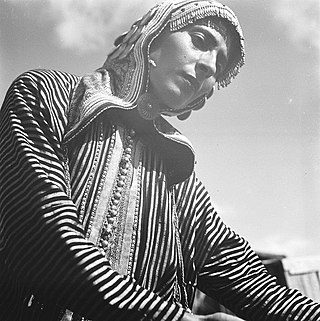
Yemenite Jews in Israel are immigrants and descendants of the immigrants of the Yemenite Jewish communities, who now reside within the state of Israel. They number around 400,000 in the wider definition. Between June 1949 and September 1950, the overwhelming majority of Yemen and Aden's Jewish population was transported to Israel in Operation Magic Carpet.
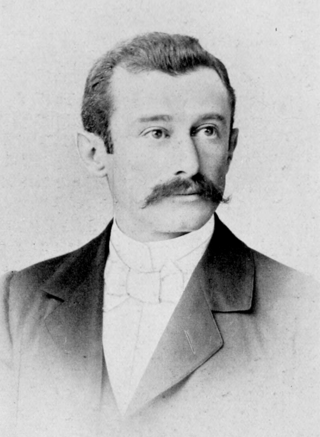
Hermann Burchardt was a German explorer and photographer of Jewish descent, who is renowned for his black and white pictorial essays of scenes in Arabia in the early 20th century.
Rada'a is a sub-district located in Radda District, Al Bayda Governorate, Yemen. Rada'a had a population of 54714 according to the 2004 census.
Rada'a is one of the cities of the Republic of Yemen. It is situated in the southeastern region of the capital city of Sana'a, approximately 150 kilometers away from it, at an elevation of approximately 2100 meters above sea level. Geographically, Rada'a belongs to the Al-Bayda governorate. It is situated within the administrative boundaries of the Rada'a district. The 2004 census recorded the population of the area as 57,215.
